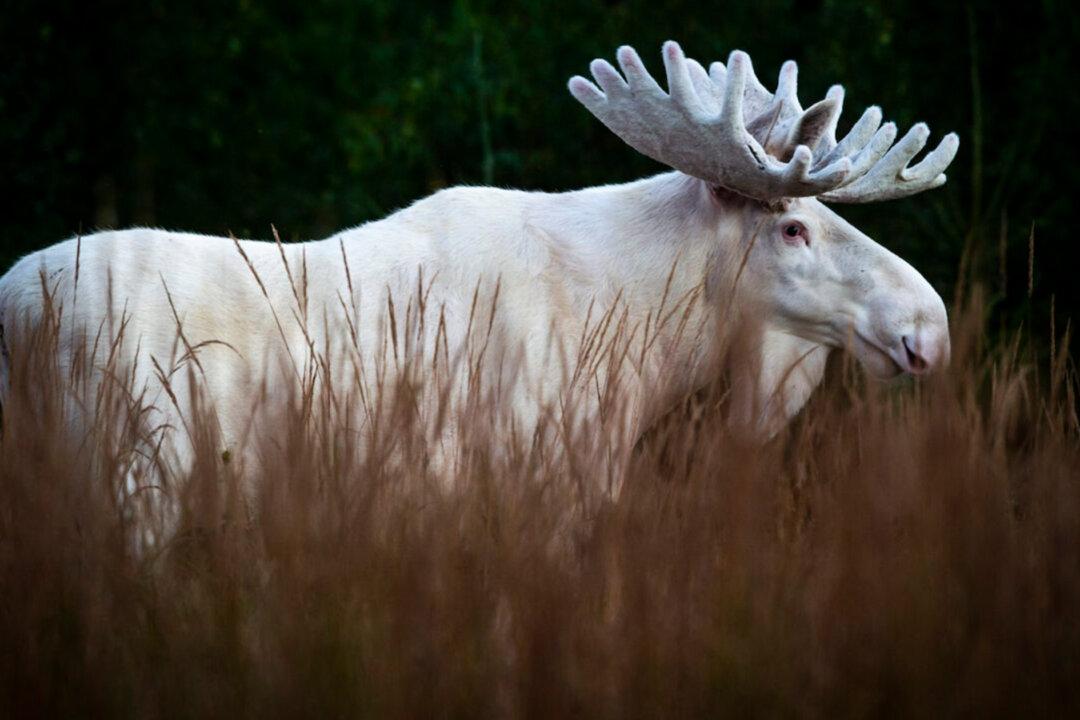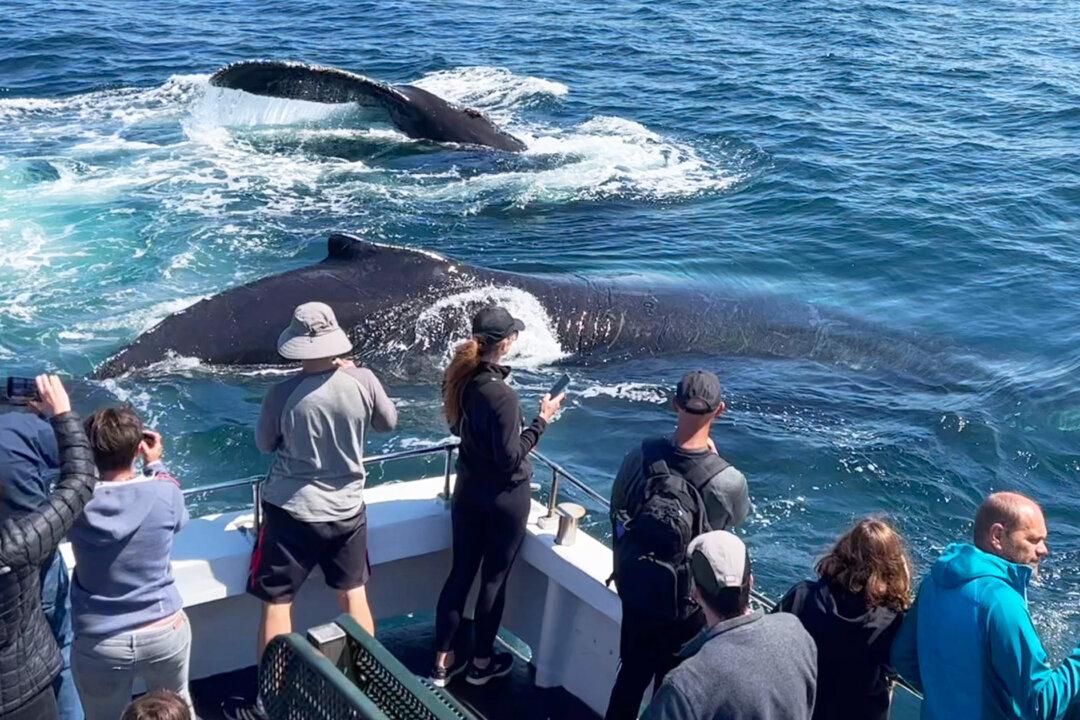A wildlife photographer has captured a series of stunning photos of a rare white moose—with a condition that gives its fur no pigment—roaming in the fields of Sweden.
Roger Brendhagen, 52, caught sight of this moose during a walk through the countryside near Värmland, Sweden.





